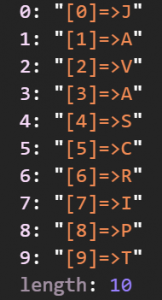如有错误或补充,望指出)
Handler 的作用是将一个任务切换到Handler所在的线程去执行。
ThreadLocal:
ThreadLocal并不是线程,它的作用是在每个线程中存储并提供数据,并Handler内部可以通过它来获得当前线程的Looper。 ThreadLocal是一个线程内部的数据存储类,可以在指定线程中存储数据。数据存储后,只有在指定线程中可以获取到存储的数据,其他线程则无法获取。 例子:
private ThreadLocal<Boolean> mBooleanThreadLocal = new ThreadLocal<Boolean>();
mBooleanThreadLocal .set(true);
Log.d(TAG,"[Thread#Main]mBooleanThreadLocal = "+mBooleanThreadLocal.get());
new Thread("Thread#1"){
public void run(){
mBooleanThreadLocal .set(fasle);
Log.d(TAG,"[Thread#1]mBooleanThreadLocal = "+mBooleanThreadLocal.get());
}
}
new Thread("Thread#2"){
public void run(){
Log.d(TAG,"[Thread#2]mBooleanThreadLocal = "+mBooleanThreadLocal.get());
}
}
结果:
[Thread#Main]mBooleanThreadLocal = true
[Thread#1]mBooleanThreadLocal = fasle
[Thread#2]mBooleanThreadLocal = null
Looper
对于looper,需要关注这几个方法:构造方法,prepare(),loop()。
构造方法:
private Looper(boolean quitAllowed) {
mQueue = new MessageQueue(quitAllowed);
mThread = Thread.currentThread();
}
在构造方法里面,做了两件事, 一是创建一个消息队列,二是将线程对象指向了创建Looper的线程。
prepare():
private static void prepare(boolean quitAllowed) {
if (sThreadLocal.get() != null) {
throw new RuntimeException("Only one Looper may be created per thread");
}
sThreadLocal.set(new Looper(quitAllowed));
}
首先判断当前线程有没有存在Looper,如果存在,则抛出异常,不存在则新建一个Looper并存储在ThreadLocal中。(这就解析了为什么一个线程只有一个Looper)
loop():
public static void loop() {
final Looper me = myLooper();
if (me == null) {
throw new RuntimeException("No Looper; Looper.prepare() wasn't called on this thread.");
}
final MessageQueue queue = me.mQueue;
// Make sure the identity of this thread is that of the local process,
// and keep track of what that identity token actually is.
Binder.clearCallingIdentity();
final long ident = Binder.clearCallingIdentity();
for (;;) {
Message msg = queue.next(); // might block
if (msg == null) {
// No message indicates that the message queue is quitting.
return;
}
// This must be in a local variable, in case a UI event sets the logger
final Printer logging = me.mLogging;
if (logging != null) {
logging.println(">>>>> Dispatching to " + msg.target + " " +
msg.callback + ": " + msg.what);
}
final long traceTag = me.mTraceTag;
if (traceTag != 0) {
Trace.traceBegin(traceTag, msg.target.getTraceName(msg));
}
try {
msg.target.dispatchMessage(msg);
} finally {
if (traceTag != 0) {
Trace.traceEnd(traceTag);
}
}
if (logging != null) {
logging.println("<<<<< Finished to " + msg.target + " " + msg.callback);
}
// Make sure that during the course of dispatching the
// identity of the thread wasn't corrupted.
final long newIdent = Binder.clearCallingIdentity();
if (ident != newIdent) {
Log.wtf(TAG, "Thread identity changed from 0x"
+ Long.toHexString(ident) + " to 0x"
+ Long.toHexString(newIdent) + " while dispatching to "
+ msg.target.getClass().getName() + " "
+ msg.callback + " what=" + msg.what);
}
msg.recycleUnchecked();
}
}
loop() 方法的实现步骤:
1、首先通过 final Looper me = myLooper(); 和 final MessageQueue queue = me.mQueue; 获取当前线程绑定的 Looper 和与 Looper 绑定的消息队列。
2、然后开启一个for的无限循环,在循环里面:
(1)通过 queue.next(); 不断指向消息队列下一个节点(也就是不断遍历消息队列)。
(2)当找到消息后,调用 msg.target.dispatchMessage(msg); 来分发消息。
(3)最后通过 msg.recycleUnchecked(); 来将消息标记为正在使用。而 msg.target 追踪一下会发现其实就是 Handler 。
Handler
对于Handler,需要关心的方法有 sendMessage,和 handleMessage 方法,Handler还可以通过 post 一个 Runnable,里面其实也是调用了 sendMessage 方法。
sendMessage:
所有的发送消息方法最终都会调用 sendMessageAtTime 方法。
public boolean sendMessageAtTime(Message msg, long uptimeMillis) {
MessageQueue queue = mQueue;
if (queue == null) {
RuntimeException e = new RuntimeException(
this + " sendMessageAtTime() called with no mQueue");
Log.w("Looper", e.getMessage(), e);
return false;
}
return enqueueMessage(queue, msg, uptimeMillis);
}
在 sendMessageAtTime 方法中,可以看到,它最终的操作就是往消息队列里面插入一条消息。(也就是说,发消息的操作其实就是往消息队列里面插入一条消息)
然后值得看下的是 enqueueMessage 方法:
private boolean enqueueMessage(MessageQueue queue, Message msg, long uptimeMillis) {
msg.target = this;
if (mAsynchronous) {
msg.setAsynchronous(true);
}
return queue.enqueueMessage(msg, uptimeMillis);
}
msg.target = this; 也就是说,上面说的 Looper 里面,分发消息的 msg.target.dispatchMessage(msg); 中的 msg.target 就是从这里赋值的。
所以,现在看回 dispatchMessage 方法:
public void dispatchMessage(Message msg) {
if (msg.callback != null) {
handleCallback(msg);
} else {
if (mCallback != null) {
if (mCallback.handleMessage(msg)) {
return;
}
}
handleMessage(msg);
}
}
可以看到,分发消息方法里面,最终会回调 handleCallback(msg); 或者 handleMessage(msg); 方法。
MessageQueue
消息队列内部存储了一组消息,以队列的形式对外提供插入和删除的工作。采用的是单链表的数据结构来存储消息。 主要包含两个操作:插入和读取。读取本身会伴随着删除操作。对应的方法是 enqueueMessage 和 next
总结
Handler通过Looper来构建内部的消息循环系统,当send方法被调用时,它会调用MessageQueue的enqueueMessage方法将这个消息放入消息队列中,然后Looper发现新消息来后,处理消息。最终消息中的Runnable或者Handler中的handleMessage方法会被调用。
因为Looper是运行在创建Handler的线程中的,这样Handler的业务逻辑就被切换到创建Handler所在的线程去执行了。
Android消息机制 转载https://www.codesocang.com/appboke/36418.html
热门源码











